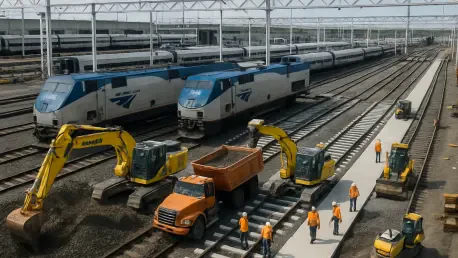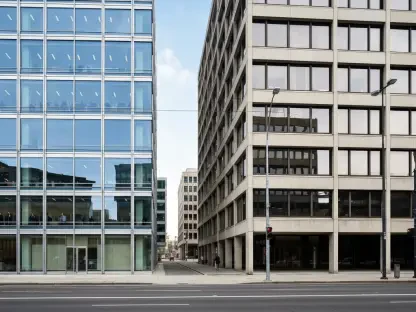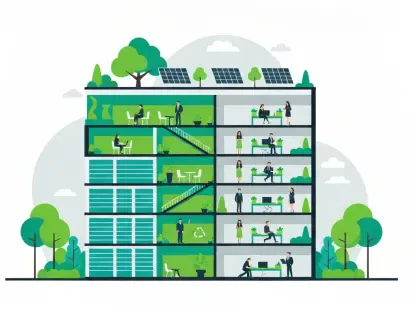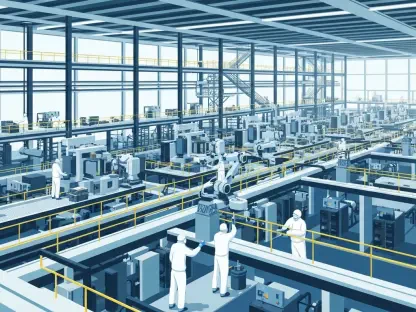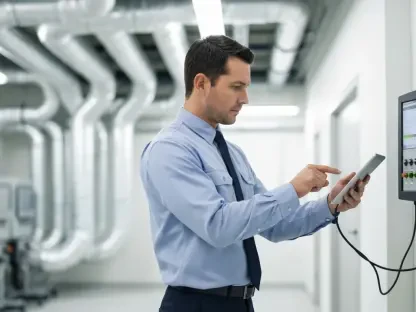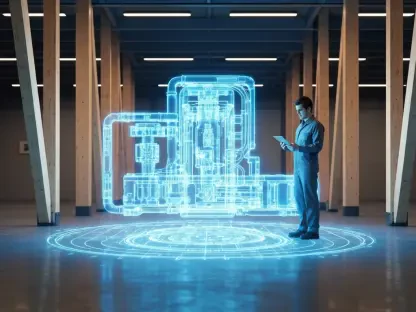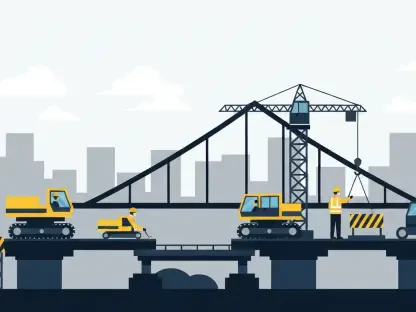In a transformative push to revolutionize rail travel along one of the busiest corridors in the United States, Amtrak has unveiled a monumental $2.6 billion investment to modernize three pivotal rail yards in the Northeast. Situated in New York City at Sunnyside Yard, Washington, D.C. at Ivy City Yard, and Boston at Southampton Yard, these facilities are critical to the operations of the Northeast Corridor, a vital artery for millions of passengers. Announced on August 26, this ambitious undertaking aims to overhaul aging infrastructure, enhance service reliability, and prepare for the rollout of advanced Airo trains by 2027. Far beyond a simple renovation, this initiative promises to elevate passenger experiences with improved comfort and expanded travel options. The impact of these upgrades will resonate across a vast network, reaching as far as Miami and New Orleans, while construction timelines extend to 2029-2030 with a phased approach to minimize disruptions. This is a defining moment for the future of sustainable public transit.
Transforming Infrastructure for Tomorrow
The core objective of this massive investment is to bring outdated rail yard facilities into the modern era, ensuring they can support cutting-edge trainsets like the Airo fleet, set to debut in 2027. These new trains are expected to offer a significant leap in passenger comfort, with enhanced amenities and smoother rides. The scope of work across all three locations includes constructing state-of-the-art maintenance and inspection buildings, adding service and cleaning tracks equipped with protective canopies, and refurbishing existing structures to meet current operational demands. Such upgrades are essential to handle the increasing complexity of rail operations and to maintain the high standards expected by today’s travelers. By focusing on these improvements, Amtrak is addressing long-standing inefficiencies that have hindered performance in the past, setting the stage for a more reliable and efficient rail system that can adapt to future technological advancements and growing ridership.
Equally important is the broader vision behind these projects, which aligns with national goals to promote sustainable transportation alternatives. Rail travel, as a greener option compared to driving or flying, is poised to play a crucial role in reducing carbon footprints across the eastern United States. The modernization of these rail yards will bolster the capacity and dependability of the Northeast Corridor, a backbone for commuter and intercity travel. This corridor serves as a lifeline for countless communities, linking major economic hubs and facilitating seamless movement for millions. Enhancing infrastructure at these key points ensures that delays and service interruptions become less frequent, fostering greater trust in public transit. Moreover, the ripple effects of improved connectivity will extend to routes far beyond the immediate region, knitting together distant cities and supporting economic vitality through better access to markets and opportunities.
Key Projects and Collaborative Efforts
Diving into the specifics, each rail yard project represents a tailored approach to unique regional challenges, with significant financial commitments and partnerships driving progress. The largest endeavor, valued at $1.3 billion, targets Sunnyside Yard in New York City, where a joint venture between Scalamandre Construction and Citnalta Construction Corp. is spearheading the work. Meanwhile, in Washington, D.C., the Ivy City Yard upgrade, costing $705 million, is managed by Clark Construction and Herzog, with critical updates like water main replacements to enable simultaneous servicing of multiple trainsets. Boston’s Southampton Yard, with a $583 million price tag, is under the guidance of SPS New England and Railroad Construction Co., focusing on expanding maintenance capabilities. Each site involves intricate tasks, from building new tracks and facilities to restoring platforms and reconfiguring vital connections, all aimed at ensuring seamless integration with the bustling Northeast Corridor.
Collaboration stands as a cornerstone of this initiative, with Amtrak tapping into local expertise through strategic partnerships with regional contractors. These joint ventures not only bring specialized knowledge to the table but also contribute to economic growth in surrounding areas by creating jobs and channeling investment into local communities. The phased construction schedules, targeting completion between 2029 and 2030, reflect a meticulous strategy to balance modernization with operational continuity, ensuring that rail services remain active throughout the upgrade process. This careful planning minimizes inconvenience to passengers while addressing the complex logistics of overhauling active rail hubs. Beyond the immediate benefits of improved facilities, these projects underscore a commitment to fostering long-term resilience in public transit infrastructure, positioning Amtrak as a leader in adapting to the evolving needs of a dynamic transportation landscape.
Long-Term Vision and Regional Connectivity
Looking ahead, the implications of this $2.6 billion investment extend far beyond the physical upgrades to the rail yards themselves. The introduction of Airo trains by 2027 marks a pivotal shift toward modernized rail travel, promising passengers an elevated experience through enhanced comfort and expanded service options. These trains will be supported by the revamped facilities, ensuring that maintenance and operational needs are met with cutting-edge infrastructure. The focus on efficiency and reliability at Sunnyside, Ivy City, and Southampton yards will translate into fewer delays and a more predictable travel schedule, addressing common pain points for rail users. This transformation is poised to redefine expectations for intercity travel, making rail a more attractive option for those traversing the eastern United States, from bustling urban centers to distant southern destinations.
Furthermore, the strengthened Northeast Corridor will serve as a catalyst for greater regional connectivity, linking major cities and smaller communities alike with improved access to rail services. Routes extending as far as Miami and New Orleans will benefit from the enhanced operational capacity at these key hubs, facilitating smoother and more frequent travel across a vast network. This investment reflects a forward-thinking approach to meeting the rising demand for public transit, particularly as populations grow and urban areas become more congested. By prioritizing infrastructure that supports sustainable travel, Amtrak is contributing to broader environmental goals while enhancing economic ties across states. As these projects progress over the coming years, they will lay a robust foundation for future expansions and innovations, ensuring that rail travel remains a vital component of the nation’s transportation ecosystem.
Reflecting on a Milestone for Rail Progress
Reflecting on this historic endeavor, Amtrak’s commitment of $2.6 billion to modernize rail yards in New York City, Washington, D.C., and Boston marks a significant turning point for public transit in the Northeast. The collaboration with regional contractors through joint ventures demonstrates a pragmatic approach to tackling complex infrastructure challenges, while phased timelines stretching to 2029-2030 ensure that disruptions are kept to a minimum. Each project, with its tailored upgrades, contributes to a unified goal of preparing for advanced Airo trains and enhancing service reliability. Moving forward, stakeholders can build on this momentum by advocating for continued funding and innovation in rail systems, ensuring that the benefits of these upgrades—improved connectivity, sustainability, and passenger satisfaction—reach even broader audiences. Exploring opportunities to integrate emerging technologies and expand service routes could further solidify rail travel’s role as a cornerstone of modern transportation.
